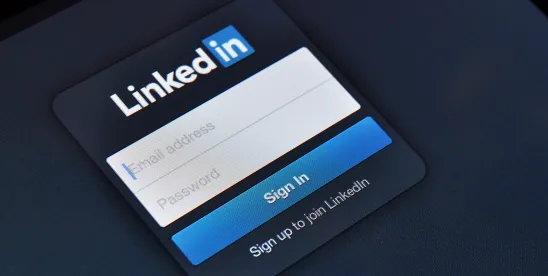For business professionals and lawyers, establishing and maintaining a strong LinkedIn presence is essential for success and influence in the industry. However, consistently generating fresh and engaging content can be challenging. The good news is that your past posts are a rich source of valuable material that can be transformed into new, impactful content. Here’s how to enhance your LinkedIn content strategy by leveraging your archive effectively and strategically.
Step 1: Request Your LinkedIn Data Archive
To begin, download your full LinkedIn data archive, which contains all your activity on the platform, including posts, connections, comments and interactions. The information you are looking for is the file titled “Shares” which contains all of your past posts. Here’s the step-by-step process:
- Log into LinkedIn: Navigate to your profile from your desktop and click on the “Me” icon at the top of your homepage.
- Settings & Privacy: Select Settings & Privacy from the dropdown menu.
- Get a copy of your data: Under the Privacy tab, scroll down to “How LinkedIn uses your data” and click on “Get a copy of your data.”
- Request archive: Choose the “Download larger data archive” option for a complete data archive, then click “Request archive.” It will take 24 hours to receive your archive. LinkedIn will notify you via email and LinkedIn messenger when it’s ready.
- Download the archive to your computer: Open the email from LinkedIn (which will be sent as a Zip folder) and save to your computer. To find your past posts, look for the “Shares” file.
Step 2: Extract and Organize Your Data
After downloading your data archive, extract the files and locate the content related to your past posts. These files are typically in .csv format. Open the file in Excel to view and organize your posts efficiently.
Step 3: Identify Key Themes and Successful Posts
Review your past posts to identify key themes, topics and posts that performed well. Look for patterns in engagement, such as likes, comments and shares, to determine which content resonated most with your audience.
In addition, take note of the types of posts that generated conversations and sparked discussions. Analyze the timing of your successful posts to see if certain days or times yielded higher engagement. Pay attention to the format that worked best, whether it’s articles, videos, infographics or status updates. Use these insights to refine your content strategy.
Evaluate the length of your content to see if shorter or longer posts received more interaction. Examine the images or visuals that accompanied your posts to understand which ones attracted the most attention.
Consider the hashtags you used and how they influenced the reach and engagement of your posts. Take a closer look at the first sentence or opening line of your successful posts to see what captured your audience’s attention. Use these insights to refine your content strategy, ensuring that future posts are tailored to your audience’s preferences and interests, enhancing both engagement and visibility.
Step 4: Create New Content
With your LinkedIn archive and key themes in hand, it’s time to generate new content. Here’s how:
- Summarize Successful Posts: Extract excerpts from your best-performing posts and summarize the content. This provides a fresh perspective or a concise version suitable for quick updates.
- Expand on Themes: For posts that sparked significant engagement, delve deeper into these themes. For instance, if a post about leadership tips was popular, create a series of posts exploring specific aspects of leadership in more detail.
- Repurpose Formats: Transform long-form posts into different formats. Convert a detailed article into a listicle, series of infographics or a short video script.
- Create Engaging Questions: Encourage interaction by formulating engaging questions based on your past content. This can help spark discussions and boost engagement on your new posts.
Step 5: Schedule and Monitor Your New Posts
With your new content ready, create a content calendar to schedule your posts. Use LinkedIn’s scheduling tools or third-party social media management platforms to plan your content in advance. Regularly monitor the performance of your new posts to continuously refine your strategy.
Key Takeaways
- Request Your Archive: Access your LinkedIn data archive to gather all past activity, including posts and interactions.
- Organize Your Data: Systematically organize your past content to get a clear overview.
- Identify Successful Posts: Analyze past posts to identify key themes and high-engagement content.
- Repurpose Content: Summarize, expand and transform successful posts into new formats.
- Engage Your Audience: Formulate engaging questions and interactive content to drive discussions.
- Plan and Monitor: Use a content calendar to schedule posts and continuously monitor performance to refine your strategy.
Unlocking the potential of the content in your LinkedIn archives can significantly elevate your engagement and ensure your presence remains dynamic and informative. By strategically repurposing past content, you can keep your LinkedIn profile a valuable resource for your professional network, driving meaningful interactions and fostering sustained growth. Adopt this strategy to amplify your impact and ensure a consistently strong, engaging LinkedIn presence.




 />i
/>i
